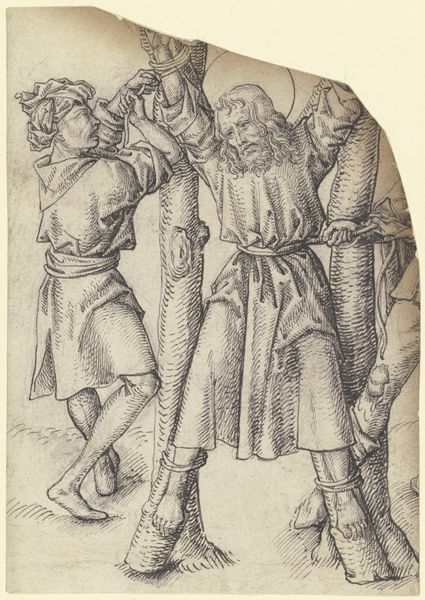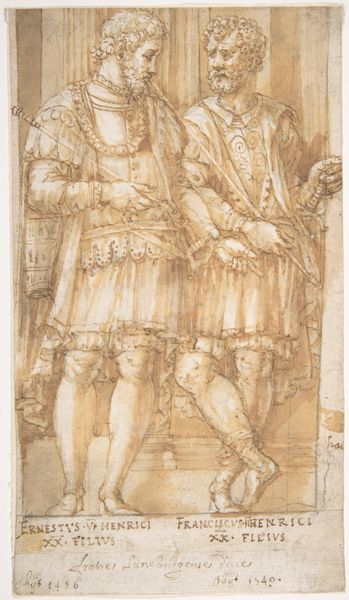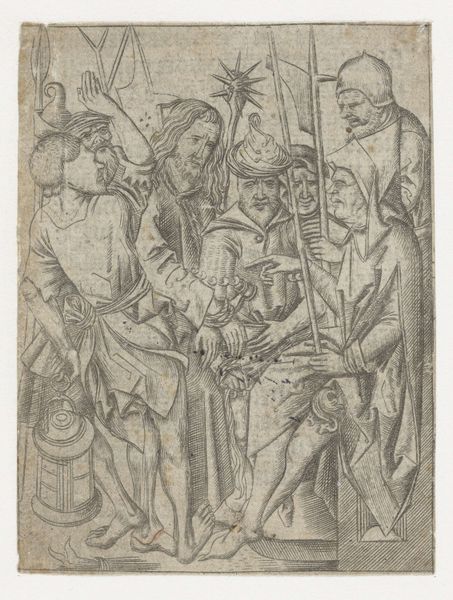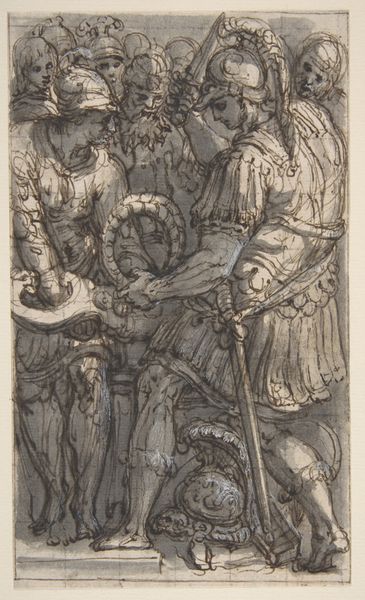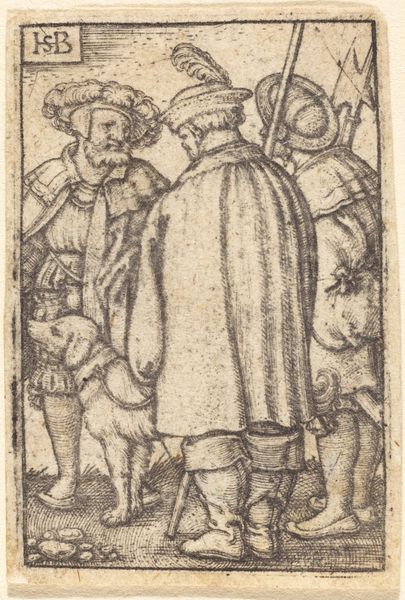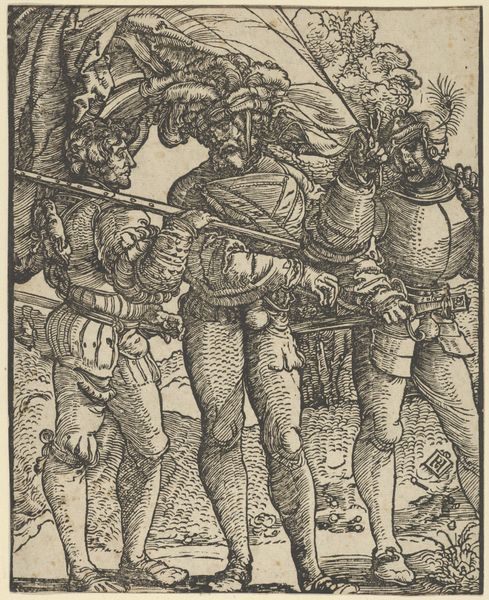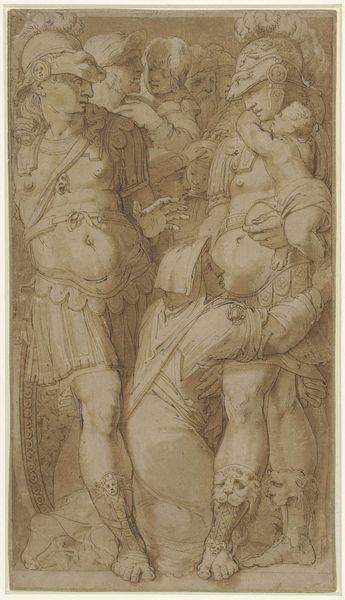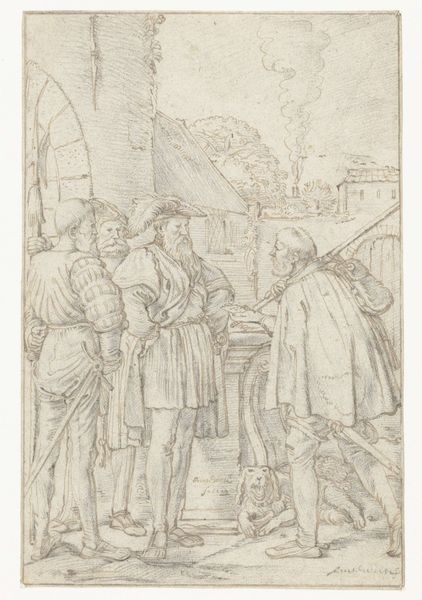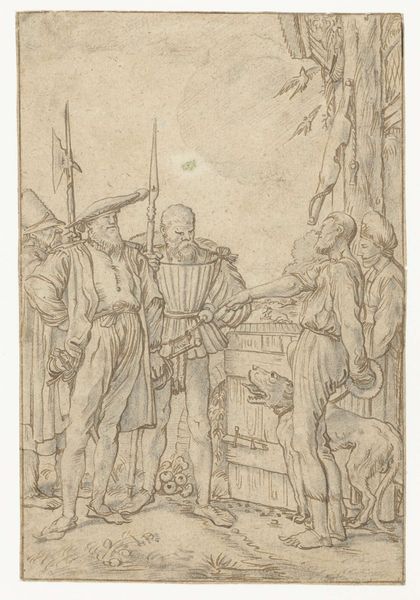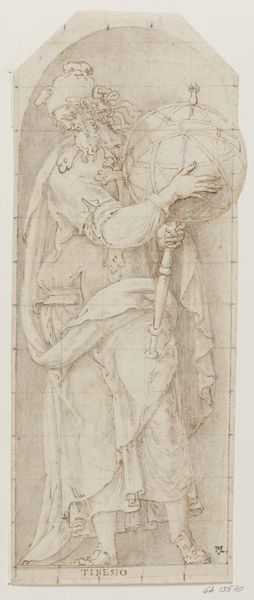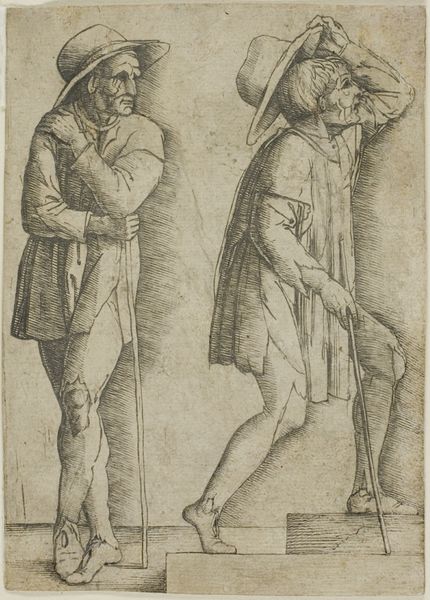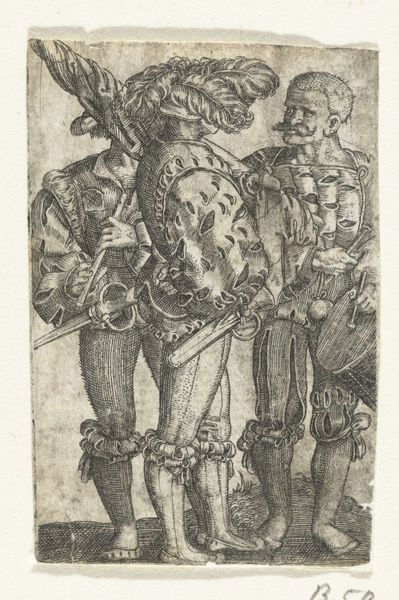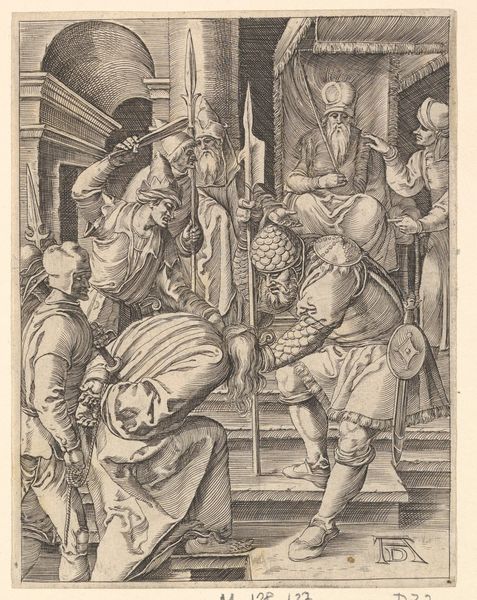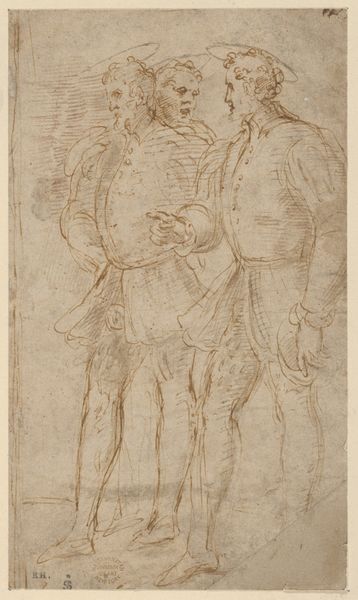
drawing, pen
#
portrait
#
drawing
#
figuration
#
11_renaissance
#
coloured pencil
#
pen
#
history-painting
#
italian-renaissance
Dimensions: 9 13/16 x 6 5/16 in. (24.9 x 16.1 cm)
Copyright: Public Domain
Curator: This is "Group of Warriors Standing," a drawing rendered between 1471 and 1535 by Pietro Perugino, currently housed here at the Metropolitan Museum of Art. Editor: My initial reaction is one of admiration for the line work; it has a crisp, controlled quality even in a study like this. There is remarkable skill in portraying weight and texture with so few strokes. Curator: Perugino employed pen and colored pencil in creating this Renaissance artwork, displaying it in a sepia tone with a rich spectrum that enhances the details of the armor and figures, emphasizing the tangible components of Renaissance society and their symbolic roles in war and labor. Editor: Yes, and note how the light falls evenly, yet the figures still possess considerable three-dimensionality. Observe the composition – a central, strong figure with supporting players, yet they remain somewhat detached, almost existing on different planes. There's a dreamlike detachment despite their presence. Curator: The detachment you feel might stem from Perugino's societal position as he constructs imagery aligned with the elite—perhaps offering a somewhat idealized depiction that distances the artwork from the lived realities of laborers and artisans who toiled in their construction. The materiality of armor speaks to complex socioeconomic realities. Editor: Interesting. I would say, beyond socioeconomic conditions, that the slightly aloof expressions combined with this tight arrangement could signify power or preparedness. Every detail reinforces the central figure’s importance, which, in turn, highlights that central idea of Renaissance society: man's potential. Curator: And how Perugino translated potential into the physical form, from sharpening the pen to mixing colors. Every piece reveals societal connections through raw materials mined and traded and through laborers forced to turn the artist’s visions into tangible symbols of war and nobility. It allows you to understand material culture's crucial contribution. Editor: Absolutely, but looking at it from the Formalist angle helps isolate how a specific period is presented. Its texture shows its period through more than subject and societal influence—by the simple act of focusing on these specific warriors and these angles. Curator: Exactly! The context and presentation fuse to become more relevant than the mere representation alone. Editor: Precisely, leading us to observe not just what the artist showed, but, with this contextual backdrop, perhaps *why* he showed it that way. Thank you.
Comments
No comments
Be the first to comment and join the conversation on the ultimate creative platform.
